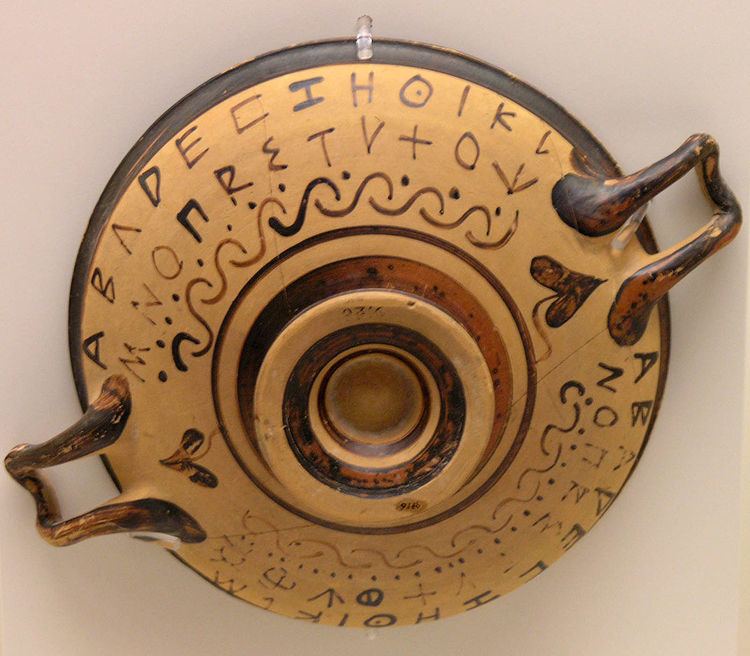 | ||
Upsilon (uppercase Υ, lowercase υ; Greek: ύψιλον, ýpsilon, [ˈipsilon]; /ˈʌpsᵻlɒn, ˈjuːp-, ˈuːp-, ˈʊp-, -lən/; or /ʌpˈsaɪlən, juːp-/) is the 20th letter of the Greek alphabet. In the system of Greek numerals, Υʹ has a value of 400. It is derived from the Phoenician waw .
Contents
Etymology
The name of the letter was originally just “υ” (y; also called hy, hence "hyoid", meaning "shaped like the letter υ"), but the name changed to “υ ψιλόν”, (u psilon, meaning 'simple u') to distinguish it from οι, which had come to have the same [y] pronunciation.
Pronunciation
In early Greek it was pronounced like English oo [u]. In Classical Greek, it was pronounced like French u or German ü, i.e., [y] (a sound that is not found in most dialects of English). This was the case at least until the year 1030AD. In Modern Greek it is pronounced like continental i or English ee, [i], and in diphthongs, [f] or [v]. In ancient Greek, it occurred in both long and short versions, but this distinction has been lost in Modern Greek.
As an initial letter in Classical Greek it always carried the rough breathing (equivalent to h) as reflected in the many Greek-derived English words, such as those that begin with hyper- and hypo-. This rough breathing was derived from an older pronunciation that used a sibilant instead; this sibilant was not lost in Latin, giving rise to such cognates as super- (for hyper-) and sub- (for hypo-).
Upsilon participated as the second element in falling diphthongs, which have subsequently developed in various ways: For instance, after alpha or epsilon it is pronounced [f] or [v] in Modern Greek.
Correspondence with Latin Y
The usage of Y in Latin dates back to the first century BC. It was used to transcribe loanwords from Greek, so it was not a native sound of Latin and was usually pronounced /u/ or /i/. The latter pronunciation was the most common in the Classical period and was used mostly by uneducated people. The Roman Emperor Claudius proposed introducing a new letter into the Latin alphabet to transcribe the so-called sonus medius (a short vowel before labial consonants), but in inscriptions, the new letter was sometimes used for Greek upsilon instead.
Four letters of the Latin alphabet arose from it: V and Y and, much later, U and W. In the Cyrillic script, the letters U (У, у) and izhitsa (Ѵ, ѵ) arose from it.
In some languages (most notably German), the name upsilon (Ypsilon in German, ípsilon in Portuguese) is used to refer to the Latin letter Y as well as the Greek letter.
Usage
Symbolism
Upsilon is known as Pythagoras' letter, or the Samian letter, because Pythagoras used it as an emblem of the path of virtue or vice. As the Roman writer Persius wrote in Satire III:
and the letter which spreads out into Pythagorean branches has pointed out to you the steep path which rises on the right.
Lactantius, an early Christian author (ca. 240 – ca. 320), refers to this:
For they say that the course of human life resembles the letter Y, because every one of men, when he has reached the threshold of early youth, and has arrived at the place "where the way divides itself into two parts," is in doubt, and hesitates, and does not know to which side he should rather turn himself.
Character encodings
These characters are used only as mathematical symbols. Stylized Greek text should be encoded using the normal Greek letters, with markup and formatting to indicate text style.
